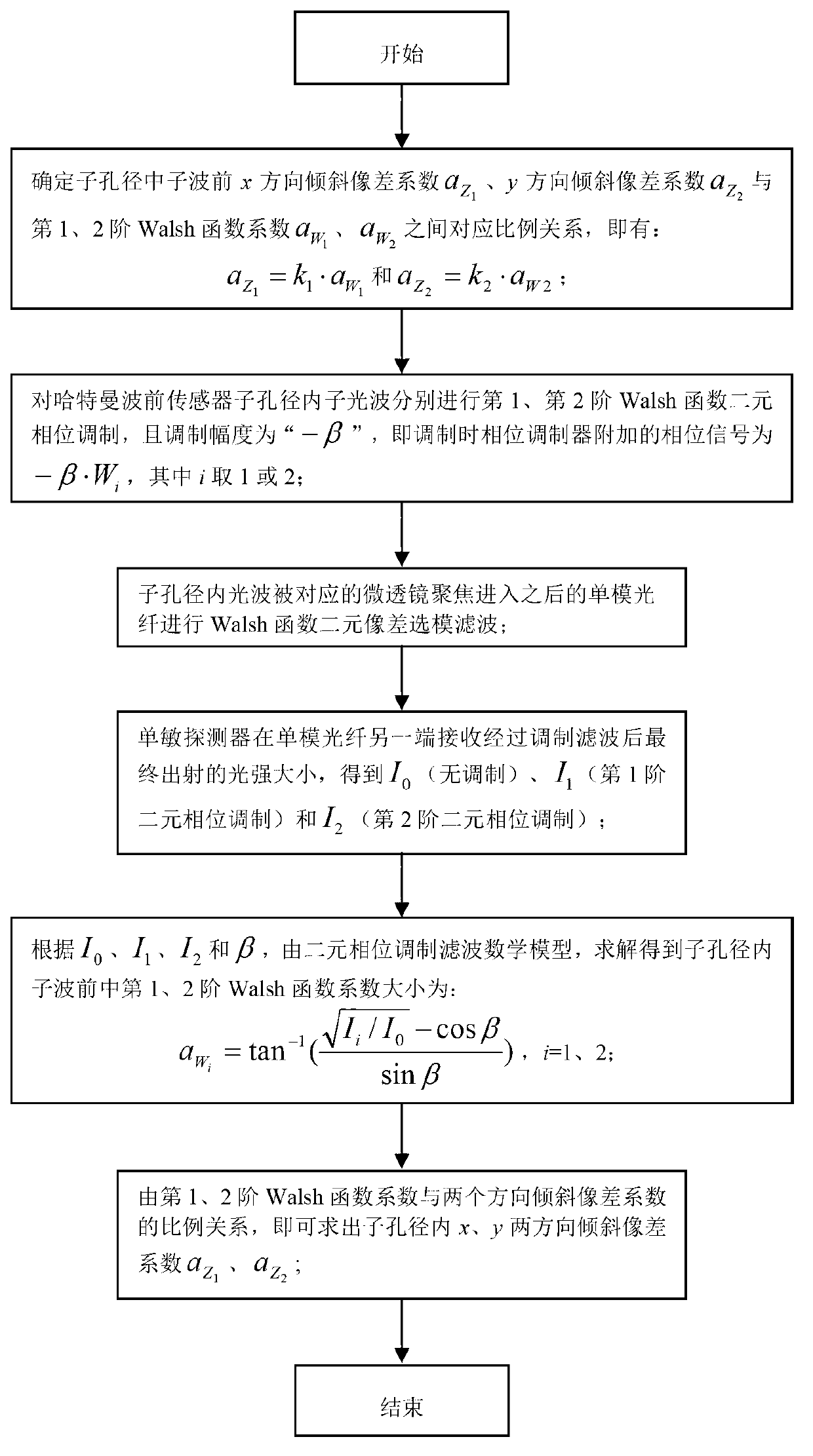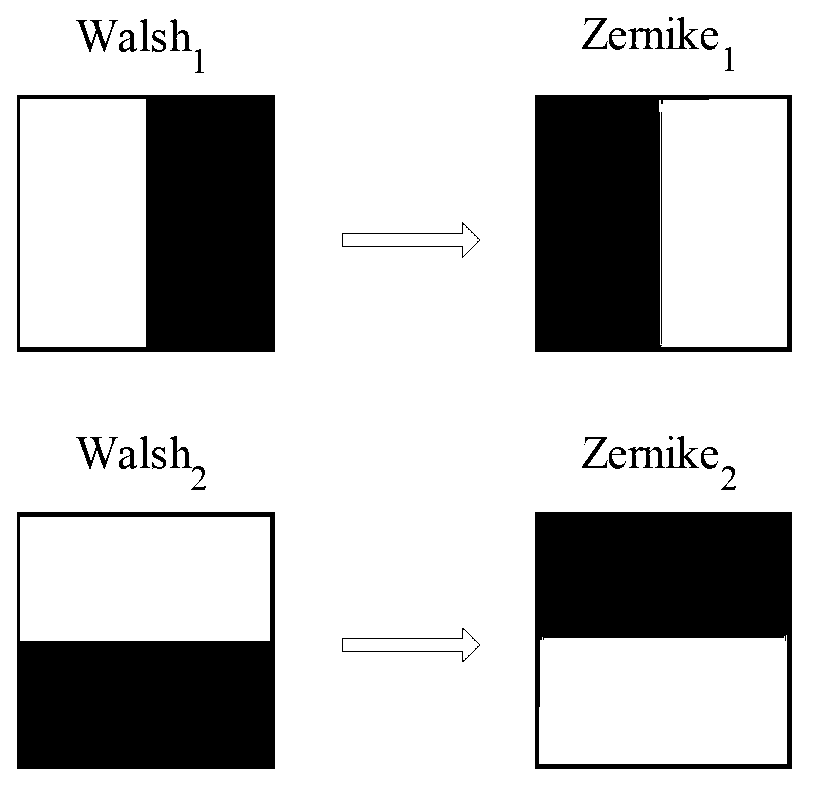Method for measuring tilt aberration of Hartmann wavefront sensor subaperture
A sub-aperture and sensor technology, which is applied in the field of measuring tilt aberration in the sub-aperture of Hartmann wavefront sensor, can solve the problems of precision and dynamic range limitation, and achieve improved sensitivity and signal-to-noise ratio, high-precision wavefront detection, and improved Effect of Wavefront Probe Velocity
- Summary
- Abstract
- Description
- Claims
- Application Information
AI Technical Summary
Problems solved by technology
Method used
Image
Examples
Embodiment Construction
[0024] In order to make the object, technical solution and advantages of the present invention clearer, the present invention will be described in further detail below in conjunction with specific embodiments and with reference to the accompanying drawings.
[0025] Before describing the present invention, the basic knowledge of Walsh function and Zernike is explained.
[0026] The optical wavefront aberration is actually the spatial distribution state of the phase, which can be expressed theoretically by a complete and orthogonal function sequence. Zernike polynomials are classic wavefront aberration expansions. Zernike polynomials are not only completely orthogonal in circular domains, square domains, etc. The distribution coincides, for example, the 0th-order Zernike polynomial represents the overall phase shift, the 1st-order Zernike polynomial represents the x-direction tilt of the phase, the 2nd-order Zernike polynomial represents the y-direction tilt of the phase, and t...
PUM
 Login to View More
Login to View More Abstract
Description
Claims
Application Information
 Login to View More
Login to View More - R&D
- Intellectual Property
- Life Sciences
- Materials
- Tech Scout
- Unparalleled Data Quality
- Higher Quality Content
- 60% Fewer Hallucinations
Browse by: Latest US Patents, China's latest patents, Technical Efficacy Thesaurus, Application Domain, Technology Topic, Popular Technical Reports.
© 2025 PatSnap. All rights reserved.Legal|Privacy policy|Modern Slavery Act Transparency Statement|Sitemap|About US| Contact US: help@patsnap.com



